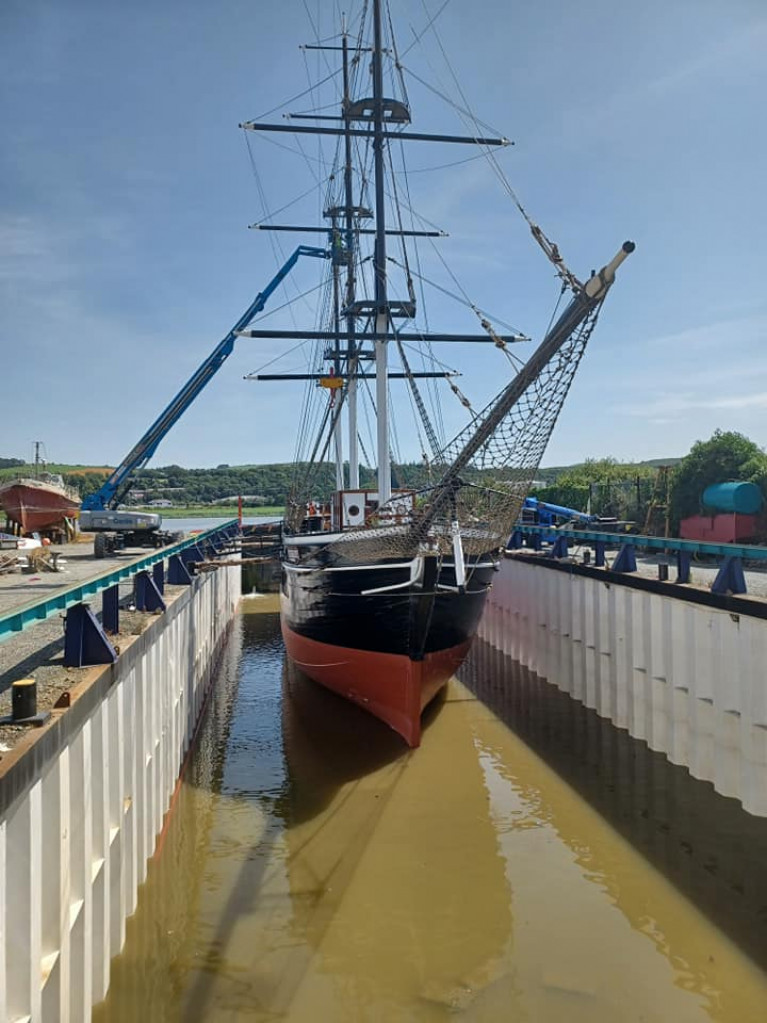Displaying items by tag: Tallship Returns
Captain Tom McCarthy paid a visit to New Ross, Co. Wexford, to admire the newly refurbished tallship which he had previously sailed on its voyage to Pembroke, south Wales.
The visit as The New Ross Standard reports, was an opportunity to meet old friends, among them Frances Ryan, John F. Kennedy Trust Chairperson, Sean Connick CEO, and former harbourmaster Luke Foley.
Holding the unique distinction of being the only person to captain all of Ireland’s tall ships – the Dunbrody, the Jeanie Johnston and the Asgard II – the Corkman previously sailed the 'Jeanie' to North America during its tour there in the early 2000s.
The tallship's return follows an extensive break at (the nearby New Ross Boatyard) where it received a complete renovation, and now the Dunbrody is welcoming visitors once more, much to Seán’s delight.
‘We had our first tour bus arrive yesterday since March 2020, Trafalgar tours, and we’re due to have a couple more tomorrow,’ he said. ‘It’s a good sign, it’s wonderful to see it, but obviously because of restrictions we’re operating at reduced capacity and can only do outdoor tours at the moment'.
He added 'Currently we’re at 25-30 per cent of capacity but it’s a step back towards normality. At the moment we’re really looking forward to 2022 and preparing for a full tourist season.’





























































